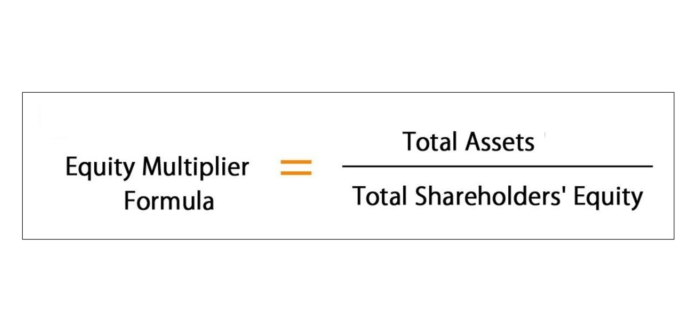03 Aug Total Debt-to-Total Assets Ratio: Meaning, Formula, and What’s Good

If the company has already leveraged all of its assets and can barely meet its monthly payments as it is, the lender probably won’t extend any additional credit. To find relevant meaning in the ratio result, compare it with other years of ratio data for your firm using trend analysis or time-series analysis. Trend analysis is looking at the data from the firm’s balance sheet for several time periods and determining if the debt-to-asset ratio is increasing, decreasing, or staying the same. The business owner or financial manager can gain a lot of insight into the firm’s financial leverage through trend analysis. Focus on increasing asset value through effective utilization, improved operational efficiency, and strategic investments.
Module 15: Financial Statement Analysis
The Russell 2000 includes the 2,000 smallest public U.S. companies in the Russell Index. FSMDX tracks the Russell Midcap Index, which includes the 800 smallest companies within the Russell 1000. The Russell 1000 contains the 1,000 largest U.S. public companies. Excluding the debt to asset ratio top 20% of the Russell 1000 leaves out large-caps and mega caps to focus on mid-sized businesses instead. The table below introduces the best Fidelity index funds with expense ratios no higher than 0.20%. The other seven funds make ideal building blocks for lazy portfolios.

Competitor Analysis: Evaluating Regeneron Pharmaceuticals And Competitors In Biotechnology Industry
By submitting this form, you consent to receive email from Wall Street Prep and agree to our terms of use and privacy policy. This calculation generally results in ratios of less than 1.0 (100%).
Step 2: Divide total liabilities by total assets

Financial ratios are created with the use of numerical values taken from financial statements to gain meaningful information about a company. Other common financial stability ratios include times interest earned, days sales outstanding, inventory turnover, etc. These measures take into account different figures https://www.bookstime.com/articles/absorption-costing from the balance sheet other than just total assets and liabilities. The debt-to-total-assets ratio is a very important measure that can indicate financial stability and solvency. This ratio shows the proportion of company assets that are financed by creditors through loans, mortgages, and other forms of debt.
Industry Variations
- It represents the proportion (or the percentage of) assets that are financed by interest bearing liabilities, as opposed to being funded by suppliers or shareholders.
- This may be advantageous for creditors because they are likely to get their money back if the company defaults on loans.
- A healthy ratio demonstrates a balanced mix of debt and equity, which enhances confidence among investors and lenders.
- If you are unsure about the meaning of any of the information provided, please consult your financial or other professional adviser.
- This Contents are not intended for, or directed to, persons in any countries or jurisdictions that are not enumerated above, or to an audience other than as specified above.
Regeneron Pharmaceuticals discovers, develops, and commercializes products that fight eye disease, cardiovascular disease, cancer, and inflammation. As a global investment manager and fiduciary to our clients, our purpose at BlackRock is to help everyone experience financial well-being. Since 1999, we’ve been a leading provider of financial technology, and our clients turn to us for the solutions they need when planning for their most important goals. We still prefer U.S. stocks over Europe’s as they benefit more from the artificial intelligence theme.
Yes, a company’s total debt-to-total-asset ratio can be too high. For example, imagine an industry where the debt ratio average is 25%—if a business in that industry carries 50%, it might be too high, but it depends on many factors that must be considered. A low total debt-to-total-asset ratio isn’t necessarily good or bad. It simply means that the company has decided to prioritize raising money by issuing stock to investors instead of taking out loans at a bank. While a lower calculation means a company avoids paying as much interest, it also means owners retain less residual profits because shareholders may be entitled to a portion of the company’s earnings. Considering the debt-to-equity ratio in industry comparisons allows for a concise evaluation of a company’s financial health and risk profile, aiding in informed decision-making.
Cash Asset Ratio: What it is, How it’s Calculated – Investopedia
Cash Asset Ratio: What it is, How it’s Calculated.
Posted: Sat, 25 Mar 2017 22:36:32 GMT [source]

The debt to assets ratio is a financial metric that measures the proportion of a company’s total assets financed by debt. It provides insights into how much of a company’s assets are funded by creditors and serves as an indicator of its financial stability. The ratio is expressed as a percentage and can range from 0% to 100%.
Ability to Meet Debts
- Instead of considering total debt, which is a sum of short-term and long-term debt, this formula will only consider long-term debt.
- In contrast, the payment of dividends to equity holders is not mandatory; it is made only upon the decision of the company’s board.
- The debt-to-total-assets ratio is important for companies and creditors because it shows how financially stable a company is.
- Develop a comprehensive financial plan that considers the company’s long-term goals, cash flow projections, and debt repayment strategies.
- In other words, it defines the total amount of debt relative to assets owned by the company.
- Start with a free account to explore 20+ always-free courses and hundreds of finance templates and cheat sheets.
This Website has not been, and will not be submitted to become, approved/verified by, or registered with, any relevant government authorities under the local laws. Finance Strategists has an advertising relationship with some of the companies included on this website. We may earn a commission when you click on a link or make a purchase through the links on our site. All of our content is based on objective analysis, and the opinions are our own.


Sorry, the comment form is closed at this time.